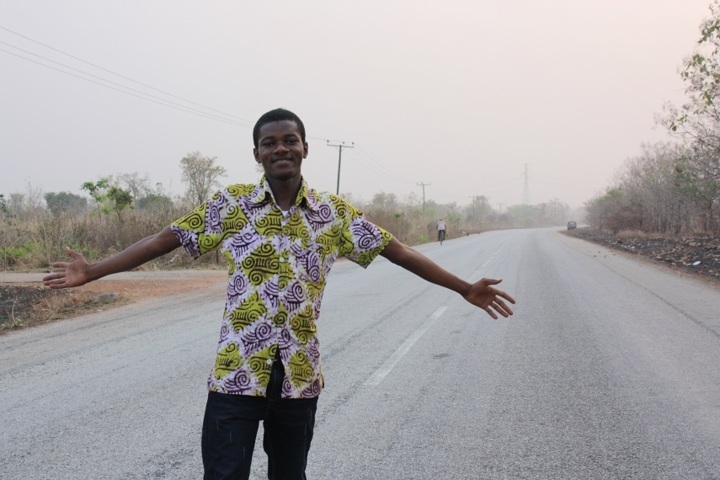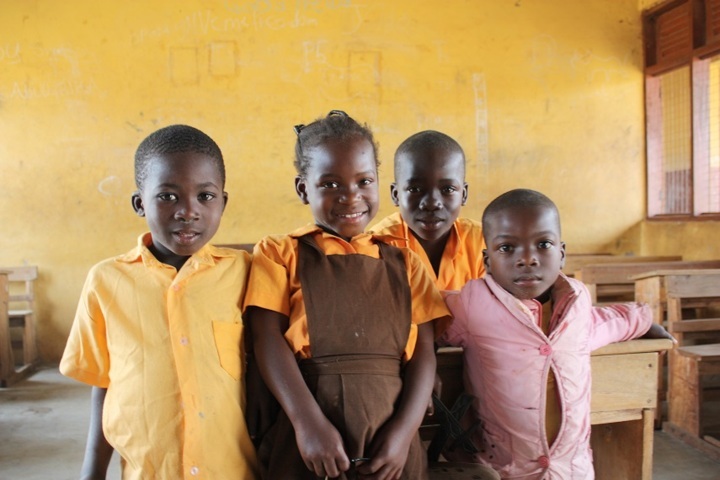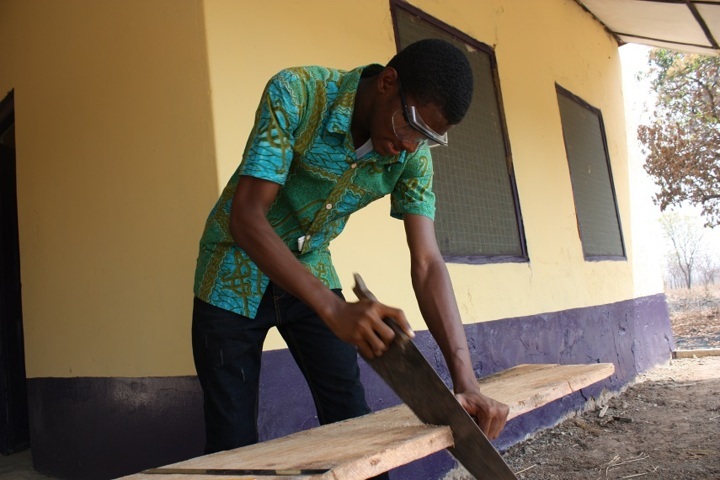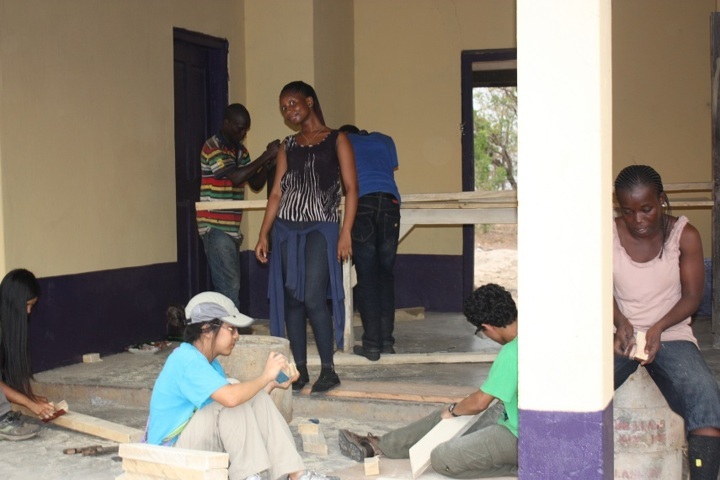
back to project
(HSL)


MENU || PLAYLIST

PROJECTS PLAYLIST

back to project
Introduction
"We are confronted daily with situations that require us to use scientific information to make informed choices and decisions at every turn. Modern life also requires general scientific literacy for every Ghanaian citizen. This is the only way by which the country can create a scientific culture toward achieving the country’s strategic programme of scientific and technological literacy in the shortest possible time. Every citizen of the country needs training in science to be able to develop a scientific mind and a scientific culture." - (Teaching Syllabus for Integrated Science, 2007)
It has come to be accepted in our country that the best way to make it as a young student is to learn ("chew and pour") and deliver every theoretical knowledge at an exam with the hope that all the knowledge we acquire 'may' be applied somewhere in the future, probably when one gets a job. It is sometimes a wonder to think about who hired the first scientists or to ask who might have given the early inventors and problem solvers directions to come up with all the great ideas.
Many young people deem it inappropriate to voluntarily apply science in solving problems in their communities, though they may be very helpful in communal labour. Is communal labour the only way the youth can volunteer to help the community? NO! The youth can also join the sect of local problem-solvers if they realize how possible it is to apply the basic science that they learn in school. NGOs should be relieved of some burdens which can be solved by the youth in a particular community.
The pragmatic approach to teaching and learning science will go a long way to make our communities and country a better one.


Rationale
The education system of the country has one of the best plans concerning the teaching and learning of Science and math. This is evident in the General Aims of the Science syllabus (with particular reference to the first and last two general aims):
The syllabus is designed to help the student to:
- solve basic problems within his/her immediate environment through analysis and experimentation.
*- adopt a scientific way of life based on pragmatic observation and investigation of phenomena.
**- search for solutions to the problems of life recognizing the interaction of science, technology and other disciplines.
-TEACHING SYLLABUS FOR INTEGRATED SCIENCE (SENIOR HIGH SCHOOL) *numbered as point 6 in the actual document **numbered as point 7 in the actual document
Working in line with the teaching syllabus, we believe there is more to do than simply teaching and learning for examinations. If young students are sensitized to the pragmatic approach to teaching and learning science, it will benefit the country and globe as a whole.
The third point highlights the interdependency of disciplines and so it is very important to also consider one of the subjects that many young students consider as a mere form of mental "activator", Mathematics, which may or may not be applicable in their life situations. However, Mathematics has a direct relationship with science and cannot be done away with or taken for granted.


Project Description
The rate of scientific and technological advancement in many countries gives the hope that there is a sure and effective way of teaching and learning science. There is a way young students can be exposed to the practicality of science wherever they find themselves and in most situations. Our sole dependency on external aid should be of the past since we all can develop our communities internally (that is to say, from the little we have in our communities). The project seeks pragmatic ways of applying science and math to solve problems in the community and make it more habitable.
Goals and Objectives
The primary goal of the Hacked Science Lab project is to instill in young students the attitude and spirit to volunteer to solve problems in the community. Students should have, at least, a practical experience of what they learn in the classroom. This will make them aware of the fact that they, even at their young ages, have enough and a lot to offer to their community.
Action plan
The whole project is expected to be completed in about three weeks. The following methodology will be followed to achieve our goal of instilling in young students the attitude and spirit to voluntarily solve problems in the community:
- Setting up a basic and holistic science lab
The science lab will encompass the three main aspects of science that are, biology, physics and chemistry.\ An additional aspect will be that of agriculture.
The science lab will be scheduled for completion in the first week. The lab will be setup in any unused classroom (or room). The whole process of the set-up will include stocking of the lab with equipment, and conducting test experiments in the lab.
Creative improvisation will be the source of most of the equipment that will be used to furnish the lab. This is to point out clearly that one does not need hi-tech apparatus to conduct every experiment. However, as many hi-tech equipment that can be acquired as possible will be used.
The agricultural aspect will not necessarily be in a room. A small garden will be set up for agricultural experiments.
Since the lab activities will require the application of mathematical principles, it will also cater for the application of Mathematics.
However, some scientific activities will be conducted outside the lab setting (in the locality).
- Classroom and lab lessons
To achieve the primary reason for this project, specifically planned lessons will be held in the classrooms and related to experiments in the laboratory. The classroom lessons will be held from the beginning of the whole project. Since the lab might not be fully set up in the first week, our focus will be on relating classroom lessons to simple applications in the environment.
The classroom lessons will continue throughout the whole project and lab lessons will be added to the projects curriculum.
The lessons will be designed to make the learning and application of science interesting. This will encourage the young students to participate fully in the activities.
- Collaboration with teachers to adapt better ways of teaching and learning science
The team will hold intermittent meetings with the teachers in the community so as to reason together to come up with ideas and means of improving the teaching and learning system in the community. The students will also be included in such meetings because their ideas cannot be left out.- Design challenge and practical application of science in the community
In the last week of the project, a scientific challenge will be posed to the students. The team will look out for any pressing problem in the community and pose the challenge to the students to solve it and ensure that solution lasts even after the whole project. The students would be at liberty to identify any problem in their community and solve it. The team will provide assistance to the student in the whole problem solving process.
Anticipated Outcomes
At the end of the project, one of the schools in the community will have a basic holistic science lab which covers physics, biology, chemistry and agric. this lab would be accessible to everyone in the community to aid in understanding science.
It is also expected that there will be a transformation in the attitude of the young students in the community, such that they would want to solve problems in their communities in a scientific way.
Another essential outcome of this project will be a modification of the style of teaching and learning at the elementary stages. The modified style will aim at enabling students to find meaning to the science and math that they learn in and out of the classroom. Teachers will be very supportive enough to encourage students to practice and apply what they learn.
Finally, the nation as a whole will have a concrete hope for the future since the potential leaders would want to volunteer to work to make the community a better one.